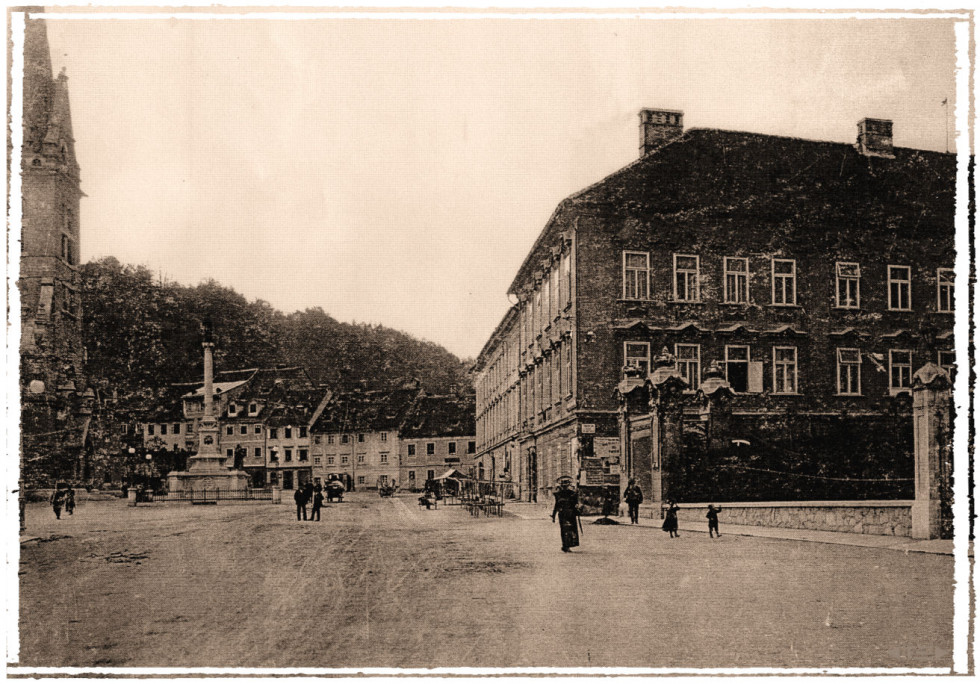The history of the Archives of the Republic of Slovenia
Like the past of the magnificent Baroque Gruber Palace, which houses the headquarters of the Archives of the Republic of Slovenia, the history of the Slovenian national archives is diverse and interesting.
The archives as a part of the provincial museum
The beginnings of the Slovenian national archives date back to 1859, when the Carniolan Historical Society proposed the establishment of a provincial archive. Before that time, archival records were collected and described by various institutions, associations and individuals. Once the construction of the former Carniolan Provincial Museum (the present-day National Museum) in Ljubljana was completed in 1887, all archival records collected up to that date were stored under its roof. Originally, the Archives was part of the Provincial Museum.
In 1926, in the Kingdom of Yugoslavia, the State Archives was officially established, although it continued to operate as an organizational unit within the museum. This did not change in the 1930s and 1940s although the demands for a public, central archive became more and more frequent. The Archives remained tight in the museum; as well as its operation, which remained largely confined to the area of the former Carniola region. The Archives did not have its own staff; the work of the archivist was performed by the director of the National Museum, Josip Mal. The position of the first independent archivist was established just before the outbreak of World War II in 1939.
Humble beginnings as an independent archival institution
On 31st October, 1945, the National Government of Slovenia established the Central State Archives of Slovenia, which began to operate as an independent institution. In 1953 it was renamed the State Archives of Slovenia. In 1966 its title was changed to the Archives of Slovenia, in 1979 to the Archives of the Socialist Republic of Slovenia, and in 1991 to the Archives of the Republic of Slovenia.
In 1990, after the political changes, the so-called “special archives” were abolished and merged with the national archives. The Historical Archives of the Central Committee of the League of Communists of Slovenia merged with the national archives in 1990, the former Archives of the Institute of the History of the Labour Movement (later renamed the Institute of Contemporary History) was included in 1992, and in 1998, so was part of the Archives of the Ministry of Internal Affairs, which kept records of the National Security Agency.
Today, the Archives of the Republic of Slovenia, which is the central and largest archival institution in the country, performs the tasks of the national archives. It is a body within the Ministry of Culture.
The Gruber Palace
Until autumn 2024, the Archives was situated in Ljubljana at Gruber Palace, the construction of which was begun in 1773 by the Jesuit Gabriel Gruber, who also designed a well-known drainage canal to draw off flood waters from the Ljubljana Marshlands. The Palace was originally intended to house the School of Hydraulics and Mechanics. From 1809 to 1813, during the period of the Illyrian Provinces, a new southern wing was built, destroying the baroque symmetry of the facade. In the second half of the 19th century, Virant House on the northern side and the south-eastern wing were added; the latter was completely renovated in the 1970s, creating a triangular courtyard.
The Gruber Palace is a precious monument of art history. The stairwell and the rooms filled with paintings and stucco decorations, the private chapel with paintings by Kremser-Schmidt, and a fresco by Herrlein adorning the dome above the stairwell, are fine examples of the bourgeois Baroque style of the last quarter of the 18th century. The atmosphere is completed by paintings in the reading room dating back to the first half of the 19th century.
A long journey to our new archival building
The Archives of the Republic of Slovenia has been operating at its new location at Poljanska Street 40 since the end of October 2024. Its new renovated and expanded facility provides 6,300 m² net of floor space. It accommodates offices for archivists, workshops and laboratories, archival reading room and other spaces for our visitors, library and repository for part of our archival holdings. The new facility will now be home to all archival employees, who before that had their offices in two separate locations.
By moving into the new facility, the Archives of the Republic of Slovenia will be able to optimize the organizational, functional, professional, and cost aspect of its work, ensure better protection and accessibility of archival records kept as Slovenian national cultural heritage, and at the same time considerably improve the working conditions for those employed at the Archives of RS as well as for those visiting it.


